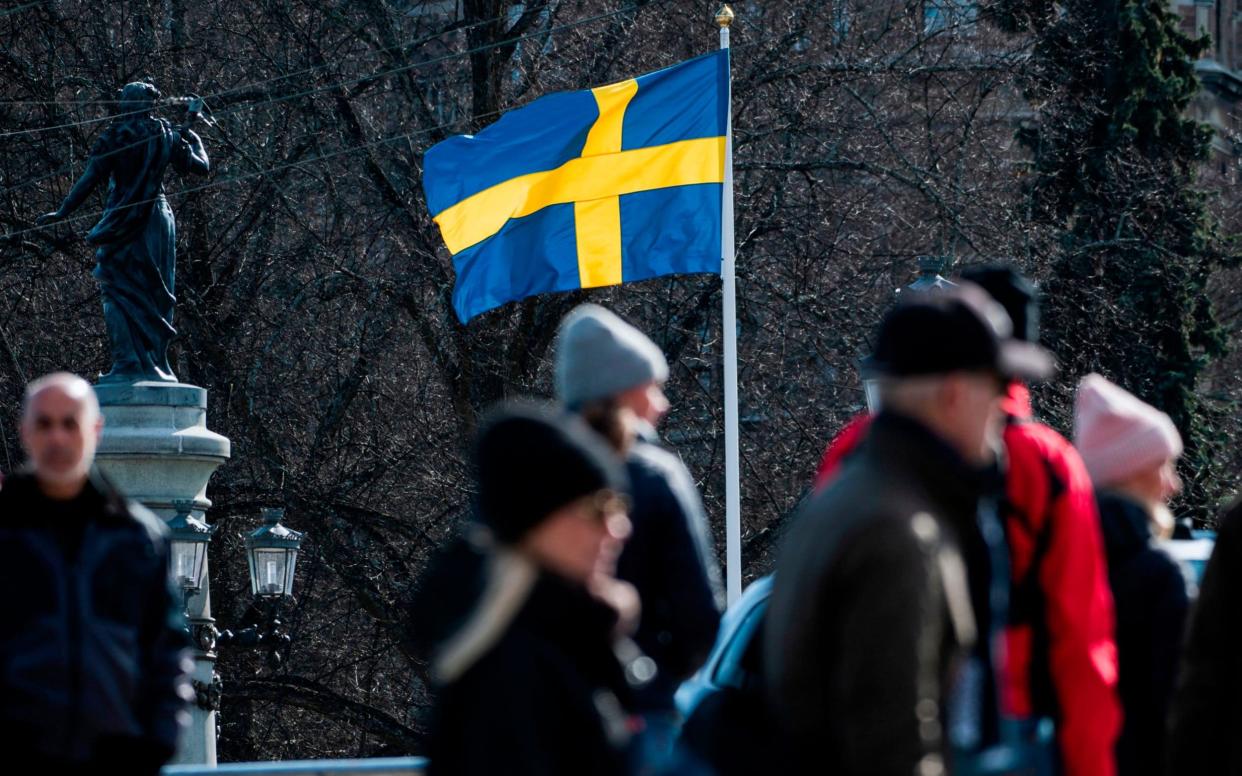Is Sweden's coronavirus strategy finally silencing the doubters?

Sweden, whose Covid-19 death rate soared above its locked-down Scandinavian neighbours at the peak of the pandemic, now has a case rate lower than those of Denmark and Norway for the first time since March.
"Sweden has gone from being one of the countries with the most infection in Europe, to one of those with the least infection in Europe, while many other countries have seen a rather dramatic increase,” Anders Tegnell, the country's state epidemiologist, said at a press conference earlier this week.
According to numbers submitted to the European Centre for Disease Prevention and Contol (ECDC), Sweden registered an average of 12 new cases per million people over the past week, compared to 18 for Denmark and 14 for Norway.
The number of deaths is currently averaging at two to three per day, down from the peak of over a hundred a day it suffered in mid-April.
Stockholm, the centre of Sweden's pandemic in April and May, registered the lowest number of new cases since March last week.
Denmark, meanwhile, registered 179 new cases on Friday, the highest daily number for more than four months.
Moreover, a test last week of 2,500 randomly selected people found that not one had an active Covid-19 infection, compared to 0.9 per cent at the end of April and 0.3 per cent at the end of May.
"We interpret this as meaning there is not currently a widespread infection among people who do not have symptoms," Dr Tegnell's deputy at the Public Health Agency of Sweden, Karin Tegmark Wisell, said as she announced the results on Thursday.
The improved outlook will come as a relief to advocates of Sweden's less restrictive coronavirus strategy - who were forced onto the defensive in May as the country for a period suffered the highest per capita death rate in the world.
Unlike Denmark and Norway, Sweden never instituted a lockdown, keeping kindergartens, most schools, bars, restaurants, shops and offices open throughout the pandemic. The Public Health Agency of Sweden, which sets the strategy, judged that it was better to rely on voluntary social distancing and self-isolation measures that could be kept in place for a long period.
"What we see now is that the sustainable policy might be slower in getting results, but it will get results eventually," Dr Tegnell said. "And then we also hope that the result will be more stable."
Sweden's decline in cases comes as many of the European countries who used strict lockdowns to control the pandemic are now struggling to prevent cases rising now they have been lifted.
At the same time, the growing protests seen across Europe against even those few restrictions still in place will make reimposing lockdown measures politically difficult.
Speaking on Swedish television, Dr Tegnell said that he believed that grandparents in Sweden, who have been advised to stay isolated and avoid close contact with their grandchildren and children, should now be able to celebrate Christmas with their families.
"I think its probably possible that we can celebrate a little more of a normal Christmas than we would have thought otherwise," he said, although he advised families to "think it through properly", and make sure they had "sensible arrangements" for keeping distance, even going so far as to hire a more spacious venue if necessary.
Sweden has so far reported 5,832 deaths due to coronavirus, more than six times as many as reported in Denmark (264) and Norway (626) combined. This means Denmark and Norway would need to suffer a series of quite severe outbreaks for their per capita death rate to begin to rival that of Sweden.

Sweden is also still carrying out fewer tests per capita than Denmark and Norway, with an average of 1.2 per 1000 people at the end of last month, compared to 2.2 in Norway and 5.9 in Denmark.
Søren Riis Paludan, a professor at Denmark's Aarhus University specialising in viral infections, said he thought the recent rise in cases in Denmark had been amplified by the country's high level of testing. It was too early, he added, to judge the extent to which immunity was bringing advantages to Sweden.
"If immunity is still in the lower percentages, then it will not help that much," he said. "But compared to Norway and Denmark - where we have very few cases - it may help. We can only wait and see whether the hard times that Sweden went through will help them through the coming period."
There are also still questions over Sweden's initial hope that a less restrictive policy would give its population greater immunity to the virus faster will be borne out.
On Thursday, the Public Health Agency of Sweden published new studies of the antibody levels among blood donors, which showed that the proportion nationally with antibodies had slowly risen since March, reaching about seven percent of the population by the end of June, and close to twelve percent in Stockholm.
In Rinkeby-Kista, the worst-hit Stockholm suburb, as many as 18 percent of the 530 16- to 69-year-olds who agreed to be tested had antibodies.
Dr Tegnell said that the difficulty in finding a representative group to test for antibodies made judging immunity in the population "extremely complicated".
"The most important thing we see right now is the continued fall in the number of infected, and part of the explanation for the continued fall that we see is fairly certain to be that we have quite a large proportion of the population who are immune," he said.


